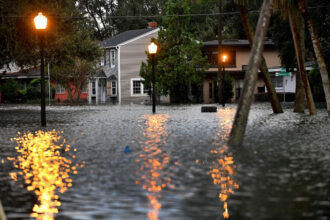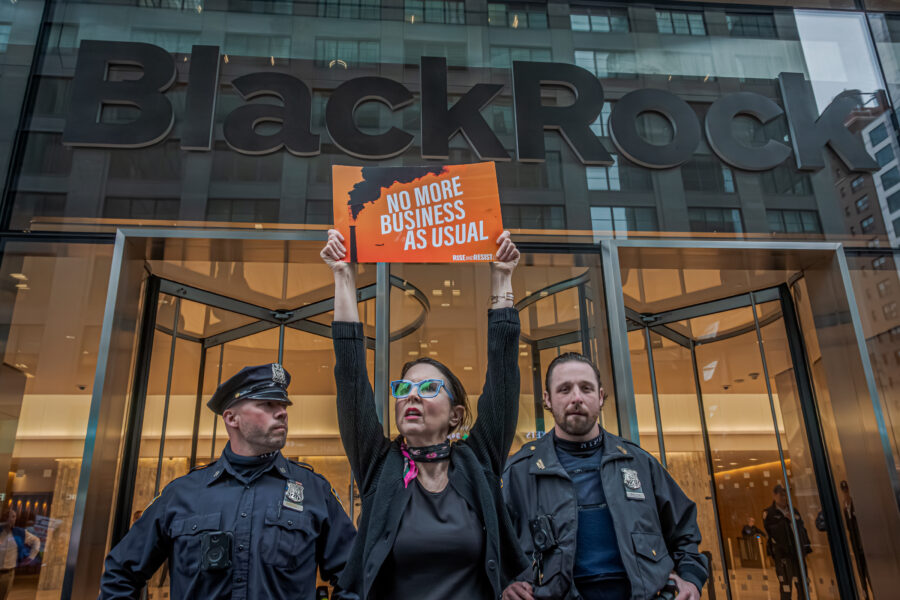For the past nine months, the world has repeatedly smashed heat records on land. But February marked a particularly unsettling record for the ocean: Average global sea surfaces climbed to the hottest temperatures ever recorded of any month since at least 1979, according to the Copernicus Climate Change Service.
Fueled by El Niño conditions and climate change, these ocean temperatures are now pushing the world toward its fourth mass coral bleaching event, the National Oceanic and Atmospheric Administration announced on March 5.
“It’s looking like the entirety of the Southern Hemisphere is probably going to bleach this year,” Derek Manzello, the coordinator of NOAA’s Coral Reef Watch, told Reuters. “We are literally sitting on the cusp of the worst bleaching event in the history of the planet.”
Three days later, officials in Australia confirmed that the Great Barrier Reef has already barreled past that cliff, and is in the midst of its fifth mass coral bleaching event in the past eight years. Scientists are especially worried about what this one could mean for the future of the world’s largest reef.
What is coral bleaching? Corals have a symbiotic relationship with tiny algae that live in their tissues; in exchange for this hardened home, the algae supply the coral with food through photosynthesis in their chlorophyll cells, which produce green and brown pigments. But extreme ocean warming can stress the coral out so much that they expel these symbiotes, sapping the coral of a key food source and its vibrant colors.
This process doesn’t automatically kill coral, but it can affect their growth and reproduction and leave them vulnerable to disease. As bleaching events become more frequent with less recovery time in between, the long-term outlook for the Great Barrier Reef is getting more bleak, according to Terry Hughes, a coral researcher at James Cook University in Australia.
“Reefs that bleached in 2017 or 2016 have had only five or six years to recover before being hit again this summer—assuming they escaped bleaching during the 2020 and 2022 episodes.” Hughes writes for The Conversation. “Clearly, the gap between consecutive heat extremes is shrinking—we are vanishingly unlikely to see another 14-year reprieve like 2002 to 2016 again in our lifetimes, until global temperatures stabilise.”
Double-Edged Recovery: Historically, bleaching events and other disturbances such as ocean acidification have decimated roughly half of the Great Barrier Reef’s coral. In 2022, a small window of low heat granted coral some time to grow and recover, during which scientists reported the highest levels of coral cover across two-thirds of the Great Barrier Reef in more than 36 years.
The issue? “The corals that are now prevalent on many reefs are young colonies of fast-growing, heat-sensitive species of branching and table-shaped corals—analogous to the rapid recovery of flammable grasses after a forest fire,” Hughes writes. “These species can restore coral cover quickly, but they also make the Great Barrier Reef more vulnerable to future heat waves.”
Australia and Beyond: If NOAA’s coral reef bleaching outlook comes to fruition, some of the world’s most iconic reefs could be at risk. Along with hurting the Great Barrier Reef, heat stress could be especially harmful for Florida’s corals, which have barely had time to recover after a summer marine heat wave decimated a large chunk of the population, as my colleague Amy Green covered.
At that time, scientists and conservationists scrambled to move corals from the bathwater-like conditions to tanks on land, including a nursery of corals that conservationists from the Coral Restoration Foundation had been growing to help rebuild populations in the region, reported the New York Times.
In addition to these reef rescues, scientists around the world are breeding more heat-tolerant species of coral or planting coral gardens to help these ecosystems recover. But as the saying goes, bandaids don’t fix bullet holes.
“The only long-term way to protect corals on the Great Barrier Reef and elsewhere is to rapidly reduce global greenhouse emissions,” Hughes writes.
More Top Climate News
On Monday, President Biden announced his $7.3 trillion budget proposal for fiscal year 2025, which essentially is his vision for the federal government, and includes a wishlist of proposals on healthcare costs, immigration issues and, of course, climate change.
The Inside Scoop: These plans don’t often go far in Congress (that’s putting it lightly—the New York Times analyzed 31 recent presidential budgets and found that nearly every single one was “way off”). But they can reveal some of Biden’s key focuses going into the upcoming election. I asked my colleague Marianne Lavelle what her first thoughts were on the climate sections of the proposal:
As part of his effort to reduce the deficit by forcing the wealthy and corporations to pay a greater share of taxes, Biden is proposing to bring in $120 billion in new revenue over the next decade by eliminating tax breaks and loopholes for Big Oil.
Saying in his budget message that elimination of such “wasteful subsidies” would help make the Tax Code more fair, Biden took aim at an array of preferences that oil and gas companies enjoy.
But the largest Big Oil subsidy Biden proposed to eliminate—worth $74.9 billion over 10 years—is the tax credit that they can claim for paying taxes abroad. Environmental activists have long argued that oil and gas companies should not get a U.S. tax credit since they are already receiving an economic benefit from the foreign country—access to its government-owned natural resources. But Biden already tried—and failed—to eliminate substantially the same fossil fuel subsidies in last year’s proposal.
The International Monetary Fund estimates that fossil fuel subsidies worldwide totaled $7 trillion last year. Of course, in the IMF’s calculation, the largest subsidy of all—one that doesn’t enter into Biden’s budget proposal—is the indirect subsidy the industry enjoys because the price of their products does not include the environmental and climate costs to society. To address that subsidy, it would require a carbon tax—even more of a political non-starter in the United States than the president’s budget request.
Meanwhile, “fruit chaos” could soon be upon us as climate change throws growing seasons out of whack, writes Zoë Schlanger for The Atlantic. She mostly dives into impacts on stone fruits—like peaches and plums—in particular, but research shows that climate change could also pose an “enormous threat” to bananas, Pascal Liu, senior economist at the UN’s Food and Agriculture Organization, told BBC News. Individuals from the fruit industry are meeting on Tuesday at the World Banana Forum (yes, this is an actual UN-sponsored event and not a meetup for hungry monkeys) in Rome to discuss the challenges to their supply chain.













